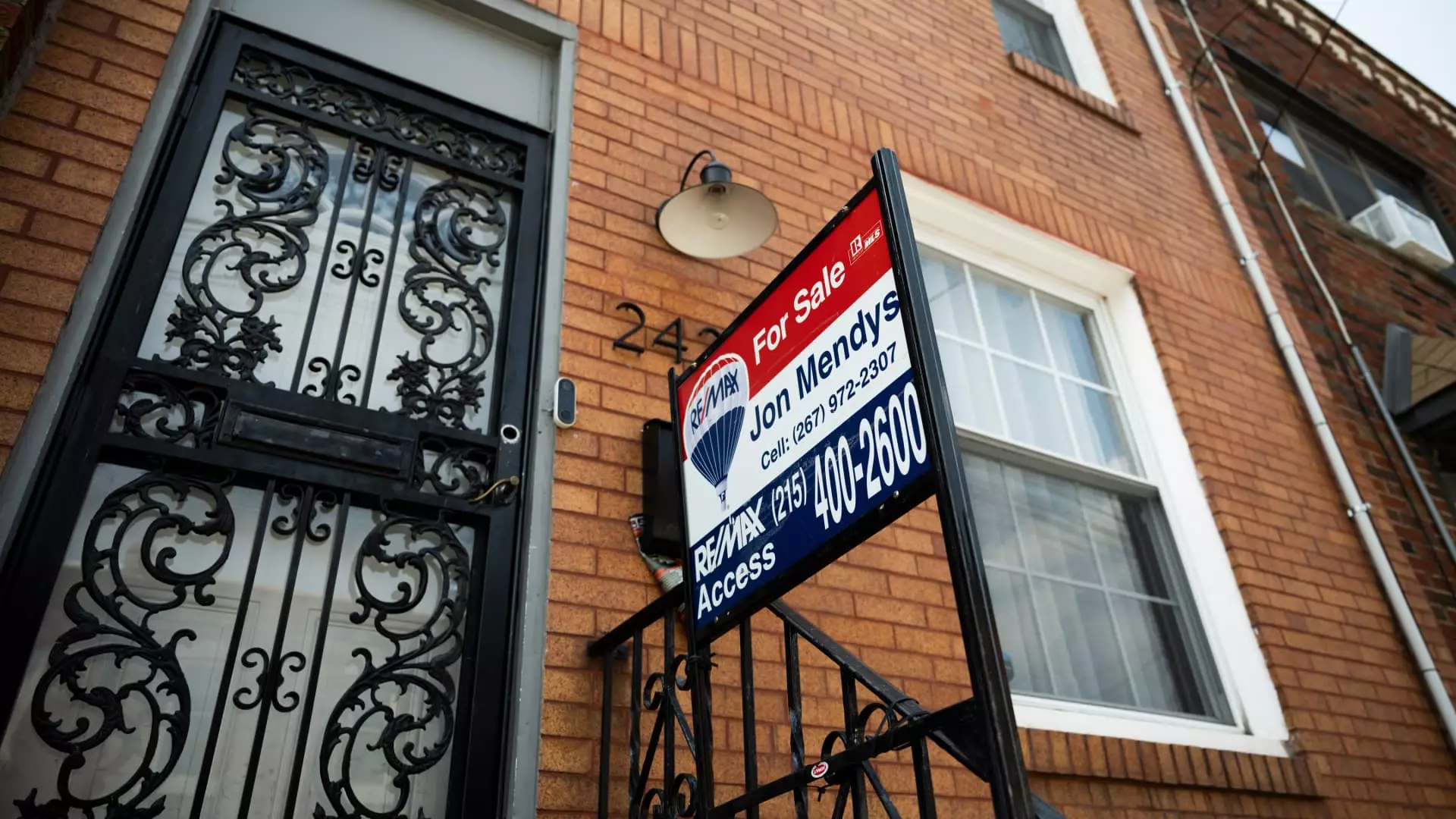The U.S. housing market finds itself at a critical juncture, marked by an unsettling combination of high mortgage rates, persistent home prices, and a scarcity of available inventory. This complexity has led to a decline in the sales of previously owned homes, reflecting broader economic trends and consumer sentiment. In January, the National Association of Realtors (NAR) reported a 4.9% drop in home sales from the previous month, with an annualized seasonally adjusted rate of 4.08 million units. While this figure represents a slight uptick—2% higher than the same month last year—it is still indicative of a trend that has seen sales plummet to levels not witnessed in nearly fifteen years.
The decline in sales can be attributed to several interrelated factors. Despite a temporary reduction in mortgage rates toward the end of 2023, which fell from above 7% to around 6%, many potential homebuyers remain hesitant. The stagnation in mortgage rates has persisted, enduring multiple rounds of interest rate cuts by the Federal Reserve. Lawrence Yun, the chief economist at NAR, underscores this predicament by pointing out that high home prices compounded with elevated borrowing costs create a barrier to housing affordability for a significant segment of the population.
Moreover, while the inventory of homes for sale has slightly increased to 1.18 million—the highest level in recent months—it remains woefully inadequate when compared to a balanced market, which is typically characterized by a six-month supply. As of January, supply equated to only 3.5 months, which continues to exert upward pressure on prices. Even with a rise in inventory—up 3.5% from December and 17% compared to January 2023—home prices have reached unprecedented heights, with the median price of sold homes hitting $396,900, a 4.8% increase year-over-year and the highest recorded for any January.
A deeper look into consumer behavior reveals that affordability remains a primary concern. With a significant number of transactions being completed in cash—29% of sales—first-time buyers are increasingly marginalized. They accounted for only 28% of sales, a marked decrease from the historical average of around 40%. Buyers looking for homes priced between $100,000 and $250,000 experienced a 1.2% decline in year-over-year sales, highlighting that the lower end of the market is struggling immensely.
This supply-demand imbalance has manifested distinctly in various segments of the market. Homes priced over $1 million experienced a nearly 27% increase in sales compared to the previous year, signifying that higher-income buyers are less affected by the current market dynamics. This disparity in sales performance across price brackets raises concerns about equity in housing access and illustrates the broader economic stratification that increasingly defines the American landscape.
Looking ahead, the consensus among economists suggests that resolving the challenges posed by limited inventory and high mortgage rates will be crucial for revitalizing the housing sector. Yun notes that the current influx of housing supply, while beneficial, may need to be complemented by a more favorable mortgage environment for buyers to fully engage with the market.
While current trends point to a challenging path for prospective homeowners, realtors express a cautious optimism that as more housing inventory becomes available, it will pave the way for qualified buyers to achieve their homeownership dreams. However, this optimistic scenario hinges on broader economic improvements and potential shifts in monetary policy. As real estate professionals report weak buyer traffic despite an increasing number of listings, the overarching concern remains clear: without a meaningful reduction in both mortgage rates and home price inflation, the U.S. housing market may struggle to support a robust recovery in the coming months.
As we navigate this tumultuous period in the housing landscape, the burdens faced by buyers—especially first-time homebuyers—highlight an urgent need for strategic interventions that foster affordability and accessibility for all segments of the population.

